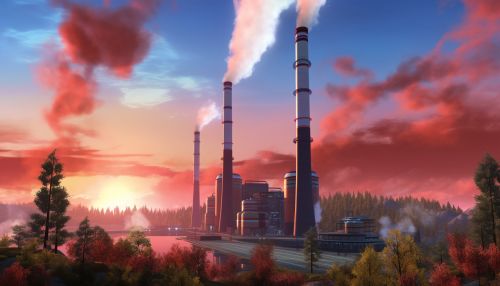Waste-to-Energy Technologies
Introduction
Waste-to-energy (WTE) technologies involve the process of generating energy in the form of electricity or heat from the primary treatment of waste. These technologies can be broadly classified into two categories: thermal technologies and non-thermal technologies. Thermal technologies involve the use of heat to break down waste materials, while non-thermal technologies use biological or chemical processes.
Thermal Technologies
Incineration
Incineration is the most common WTE method, where waste materials are combusted in the presence of oxygen. This process reduces the volume of waste by up to 90% and its weight by 75%. The heat produced during incineration is used to generate steam, which drives a turbine connected to a generator to produce electricity.


Gasification
Gasification is a process that converts organic or fossil-based carbonaceous materials into carbon monoxide, hydrogen, and carbon dioxide. This is achieved by reacting the material at high temperatures, without combustion, with a controlled amount of oxygen and/or steam. The resulting gas mixture is called syngas and can be further used to generate electricity.
Pyrolysis
Pyrolysis is a thermal decomposition process that occurs at elevated temperatures in an inert atmosphere such as nitrogen. It involves the change of chemical composition and physical phase, and is irreversible. The word is coined from the Greek-derived elements pyro "fire" and lysis "separating". Pyrolysis is a type of thermolysis, and is most commonly used in the treatment of organic materials.
Non-Thermal Technologies
Anaerobic Digestion
Anaerobic digestion is a series of biological processes in which microorganisms break down biodegradable material in the absence of oxygen. One of the end products is biogas, which is combusted to generate electricity and heat, or can be processed into renewable natural gas and transportation fuels.
Landfill Gas Collection
Landfill gas is a natural byproduct of the decomposition of organic material in landfills. This gas is composed of roughly 50% methane, 50% carbon dioxide and a small amount of non-methane organic compounds. Landfill gas can be used to generate electricity, heat, or as a chemical feedstock.
Environmental Impact
WTE technologies can significantly reduce the volume of waste that would otherwise be sent to landfills. They also have the potential to reduce greenhouse gas emissions by offsetting the use of fossil fuels for energy production. However, these technologies also have potential environmental drawbacks, such as air pollution and the production of toxic ash.
Economic Considerations
The economics of WTE technologies depend on a variety of factors, including the cost of waste disposal, the value of the energy produced, and the cost of the technology itself. In general, WTE technologies are most economically viable in regions with high waste disposal costs and high energy prices.
Future Trends
The future of WTE technologies is likely to be influenced by a variety of factors, including advances in technology, changes in waste management policies, and shifts in energy markets. One potential trend is the increased use of advanced thermal technologies, such as gasification and pyrolysis, which can produce higher-value products than traditional incineration.
